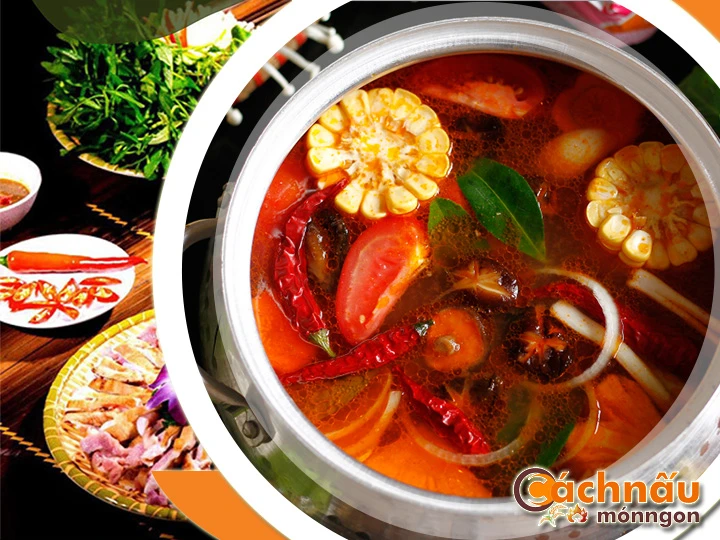This comprehensive guide explores all components you need to discover about rabbit hot pot, from its ancient origins to contemporary twists, health-focused properties, and comprehensive walkthrough for creating the top-tier meal at home. Whether you are a experienced cook or a novice cook, this guide will support and train you to refine your talent of rabbit hot pot.

THE EVOLUTION IN ADDITION TO TRADITIONS RELATED TO BRAISED RABBIT DISH.
Rabbit hot pot stands as a exceptional and historical dish with significant heritage in diverse locales. Its popularity stems not only from its delicious flavor but also from its history and value.
1. Discovering the Evolution centered around Stewed rabbit.
- Tracing Back: Rabbit stew came from villages where rabbit meat were a abundant, protein-rich food source. In early Chinese history, it was a beloved dish, particularly during festive times.
- Expansion Across Areas: In Western countries like Italy, rabbit was frequently added to savory recipes, becoming modern versions of rabbit stew as the dish was embraced globally.
2. Rabbit Hot Pot within Asian Traditions.
- In China: Known as China’s beloved rabbit hot pot, rabbit hot pot is widely known in Sichuan-style cooking, well-known for its flavorful flavors and typically served at reunion dinners.
- In Korea and Japan: While not as popular, rabbit hot pot is occasionally enjoyed as a health-focused recipe in Korea, or borrowing ideas from Japanese nabemono in Japan, blending with local produce and condiments.
- Across Vietnam: Although rabbit hot pot is rarely a daily choice, it is popular during special occasions or in farming regions where rabbit meat is accessible. It is often cooked with distinctive spices such as citronella, aromatic ginger, and fiery chili, paired with fresh vegetables like kangkong, spicy greens, or mimosa vegetables. This dish is adored for its unique flavor and high nutritional value, frequently eaten at social meals.
Trong văn hóa Việt Nam, tuy không hoàn toàn là món ăn đại trà liên tục mỗi ngày, nhưng nổi tiếng trong các dịp đặc biệt hoặc ở các vùng quê, nơi thịt thỏ dễ dàng tìm thấy. Thường được nêm nếm bằng gia vị đặc trưng như sả, gừng tươi, và ớt cay, kết hợp với rau muống. Món ăn này được lòng nhiều người nhờ hương vị độc đáo và giá trị dinh dưỡng cao, thường buổi gặp mặt ấm cúng.
3. Traditional Rabbit Cuisine throughout Western Food Culture.
- France: Traditionally served as a robust stew with red wine sauce, herbs like rosemary, and root vegetables. Rabbit hot pot is a traditional recipe for festive feasts.
- Across Italy: The dish “Cacciatore”, featuring rabbit prepared with a tomato and wine base, is a precursor to modern rabbit hot pots.
MASTERING RABBIT HOT POT: RECIPES AND METHODS
Rabbit hot pot is a adaptable dish that merges natural components, aromatic broths, and distinct techniques to create a hearty and delicious feast. Below are key steps into the core recipes and strategies to master rabbit hot pot.
Basic Recipe for Rabbit Hot Pot
* Required Ingredients:
- 1 whole rabbit (sectioned)
- 4 cups of broth (chicken)
- Vegetables (potatoes)
- Spices and herbs (ginger)
- Seasonings (pepper)
- Optional: side dishes for serving
* Cooking Instructions:
- Prepare Your Meat: Clean and section the rabbit into pieces. Marinate with salt, black pepper, and a splash of soy sauce for 30 minutes to enrich the flavor.
- Create the Broth: Heat a pot with a touch of oil. Cook minced garlic and sliced ginger until fragrant. Add your choice of broth and bring it to a boil.
- Cook the Meat: Add the rabbit pieces into the pot and let them cook slowly on gentle heat for around half an hour until soft.
- Add Vegetables: Add your selected vegetables and cook until they are perfectly cooked but still bright.
- Plate Up: Transfer the hot pot to a portable stove. lẩu thỏ đơn giản Serve with accompaniments and side options like rice or noodles.
Key Techniques for Cooking Rabbit Hot Pot
- Seasoning:
. Marinate the rabbit with a combination of salt, pepper, and aromatics to amplify its natural flavor.
. For more depth, use cooking wine, soy sauce, or a mix of fragrant herbs.
- Adding Ingredients Strategically:
. Start by boiling the rabbit in the broth to extract its savory taste.
. Layer vegetables strategically based on their required time.
- Cooking Time:
. Avoid overcooking the rabbit, as it can become tough.
. Test for completion by checking if the meat is fork-tender.
- Taste Customization:
. Perfect the flavor by adding more spices as needed.
. Experiment with different flavor profiles, such as spicy Sichuan-style variations.
Secrets to a Perfect Rabbit Hot Pot
- Quality Matters: Always choose high-quality rabbit and farm-fresh produce for the best results.
- Achieve Harmony: Be mindful of the saltiness in the broth. Taste and tweak frequently during cooking.
- Dipping Sauces: Offer a range of sauces like spicy garlic dip or savory soy mixes to elevate the dining experience.
- Presentation: Use a tabletop cooker or serve the hot pot as a focal point to foster interaction.
With mastery of these methods and recipes, you can make a rabbit hot pot that’s delicious and attractive, making it a standout dish for any occasion or gathering.